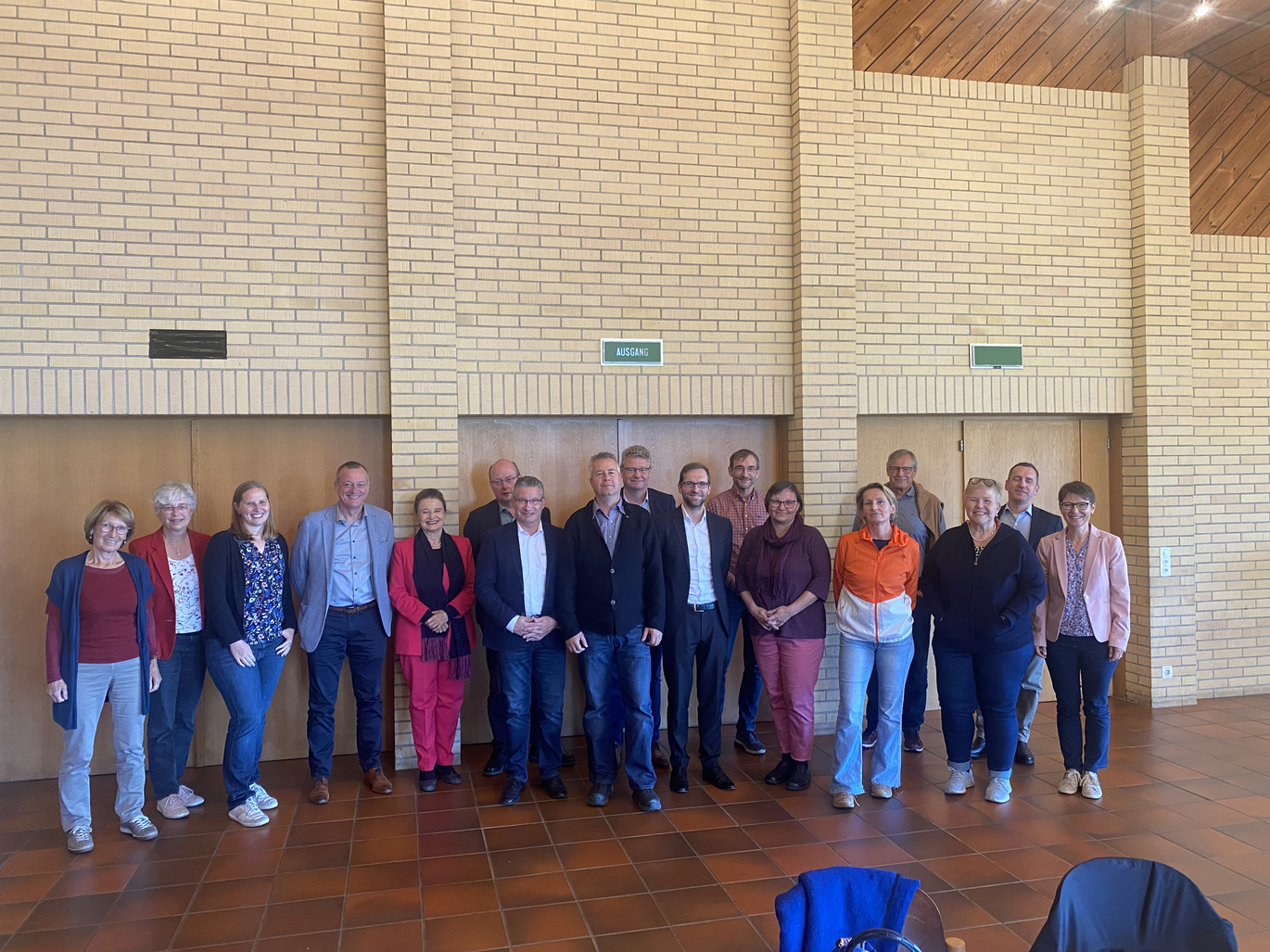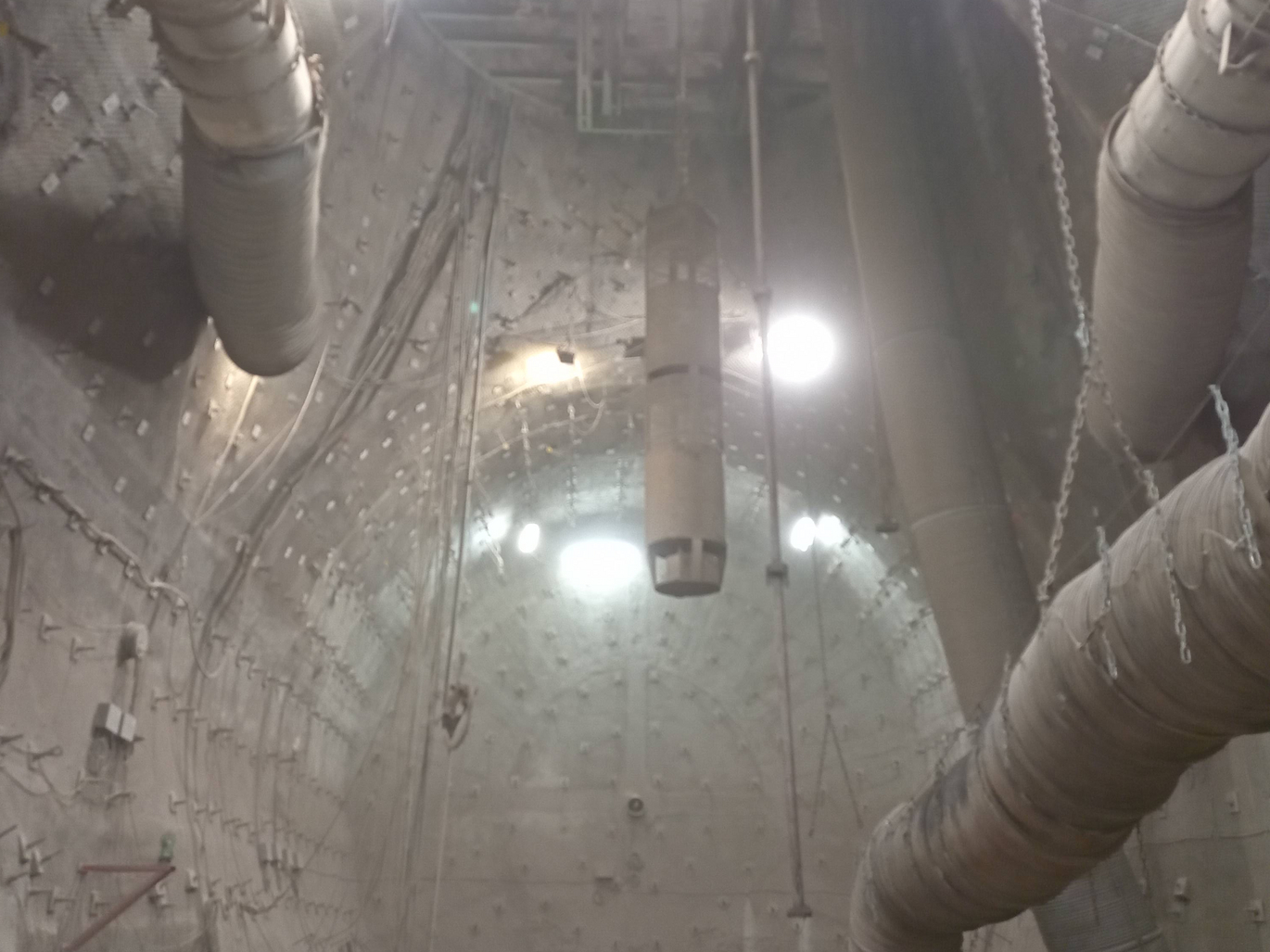Study Trips of the Advisory Board In order to gain insight into the repository activities of other countries, the Advisory Board organizes study trips. This involves looking at repository projects in other countries and holding talks with the authorities and local representatives on site.
Study trips carried out so far:
Austrian Board for Radioactive Waste Mangement in Switzerland
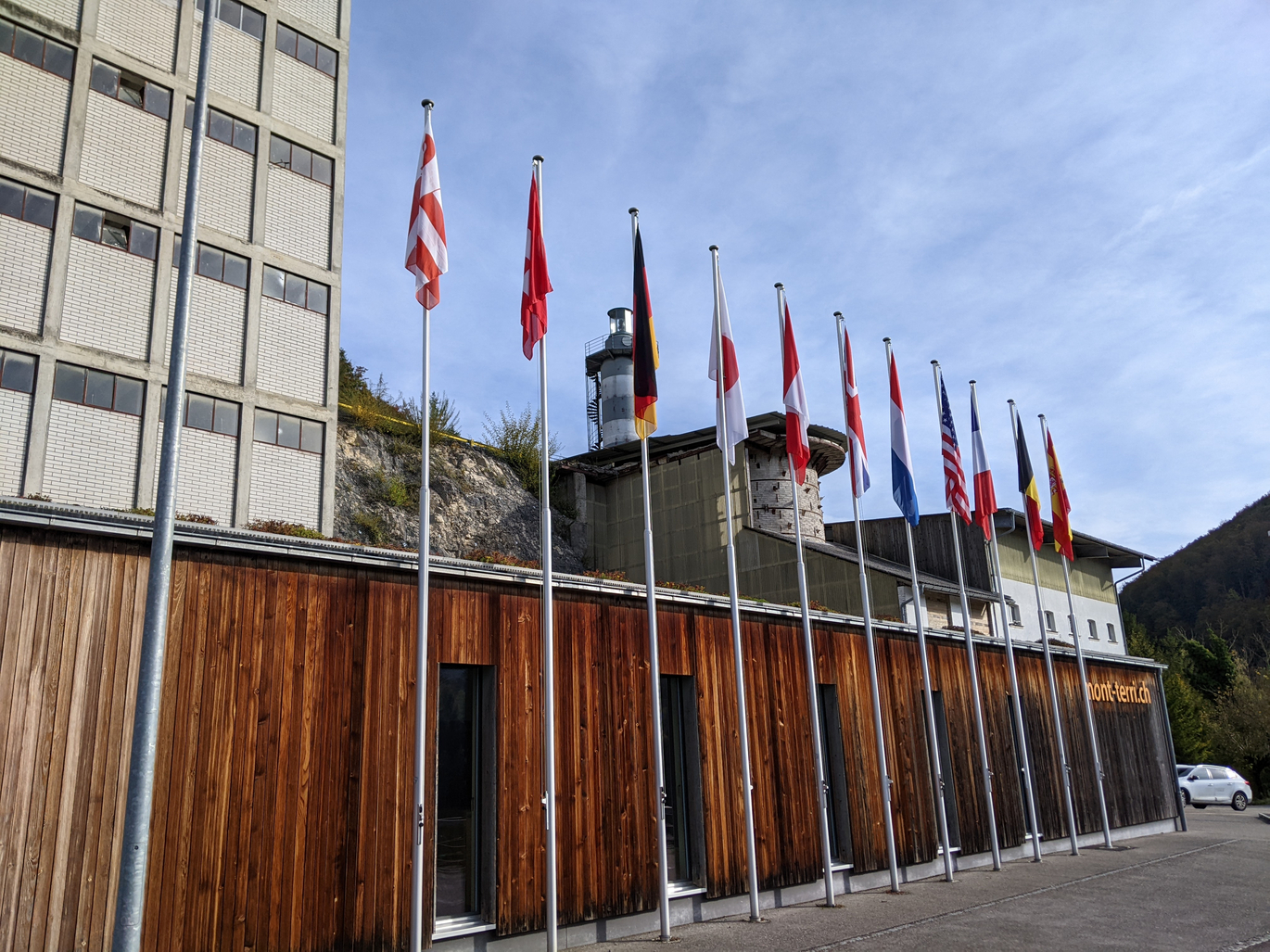
A delegation from the Austrian Board for Radioactive Waste Management visited neighboring Switzerland from 16 to 17 October 2023 with the aim of gaining insights into the Swiss site selection process, the associated participation formats and the Mont Terri rock laboratory. Switzerland is planning to dispose low- and intermediate-level radioactive waste together with high-level radioactive waste and spent fuel elements in a deep geological repository.
The visit to Switzerland began in the municipality of Stadel, the place where the entrance to the repository is planned. Meetings and discussions were held there with representatives of the authorities, operators, local politicians, regional conferences and NGOs. This exchange provided an insight into the Swiss process, public participation and the challenges that accompany such a large project. The Swiss concept aims for active and broad public participation.
NAGRA
The National Cooperative for the Disposal of Radioactive Waste (Nagra) is a technical and scientific competence center for the disposal of radioactive waste in deep geological repositories. It is responsible for the disposal and final storage of radioactive waste in Switzerland and will later also construct the final repository. The company was founded in 1972 by the waste producers, the nuclear power plant operators and the Swiss Confederation. These finance Nagra's running costs in accordance with the polluter-pays principle.
The Combined Deep Geological Repository
Until 2019, five reactors were in operation in Switzerland to produce electricity. Today, there are still four reactors active, as the reactor in Mühleberg was shut down at the end of 2019 after 48 years of operation. All radioactive waste in Switzerland, divided into low- and intermediate-level waste (LILW) and high-level waste (HLW), is collected at the nuclear power plants or in the central interim storage facility (Zwilag). Nagra is planning a "combined" deep geological repository for this waste at a depth of up to 1000 meters.
Swiss Site Selection Process
The Deep Geological Repositories Sectoral Plan was adopted in 2008. This plan regulates the search for a site and provides for a deep geological repository for low-, medium- and high-level radioactive waste and spent fuel elements. The site selection takes place in three stages as part of the Deep Geological Repositories Sectoral Plan and defines safety as the top priority. Nagra proposed Nördlich Lägern as a site in September 2022. Nagra is currently preparing the submission of the plan for licensing.
Public Participation
The Deep Geological Repositories Sectoral Plan also regulates public participation in the search for a site. This is organized in various formats.
The Nuclear Waste Management Advisory Board advises the Federal Department of the Environment, Transport, Energy and Communications (DETEC) on the implementation of the site selection process, but has no decision-making authority. The Advisory Board is made up of scientists, representatives of the National Council, industry and the press.
In addition, there are regional conferences in which the local population of the potential or proposed site(s) can participate. The aim of the regional conferences is to identify the concerns, questions and needs of the region. The regional conferences can also participate in the design of the surface infrastructure and influence socio-economic studies. However, there is no co-determination and no say on fundamental issues such as the location of the deep geological repository and safety.
The affected municipalities also actively involve citizens with events on various topics. Good communication, access to transparent information and a fair compensation procedure are important to the municipalities.
Visit to the Mont Terri Rock Laboratory
On the second day of the study trip, the Austrian Board for Radioactive Waste Management visited the Mont Terri rock laboratory, where the properties of Opalinus Clay are investigated.
The Mont Terri research laboratory was created by chance during the construction of a highway tunnel when a layer of Opalinus Clay was discovered. The subsequent investigations showed that Opalinus Clay is almost impermeable to water. Opalinus Clay appeared to be a very good choice as a host rock for the final disposal of radioactive waste. For this reason, the research tunnel was enlarged in order to investigate the properties of this type of rock and methods for the final disposal of radioactive waste. Today, the Mont Terri rock laboratory is an international research project with a total of over 170 experiments. More recent experiments also deal with the possibility of CO2 storage.
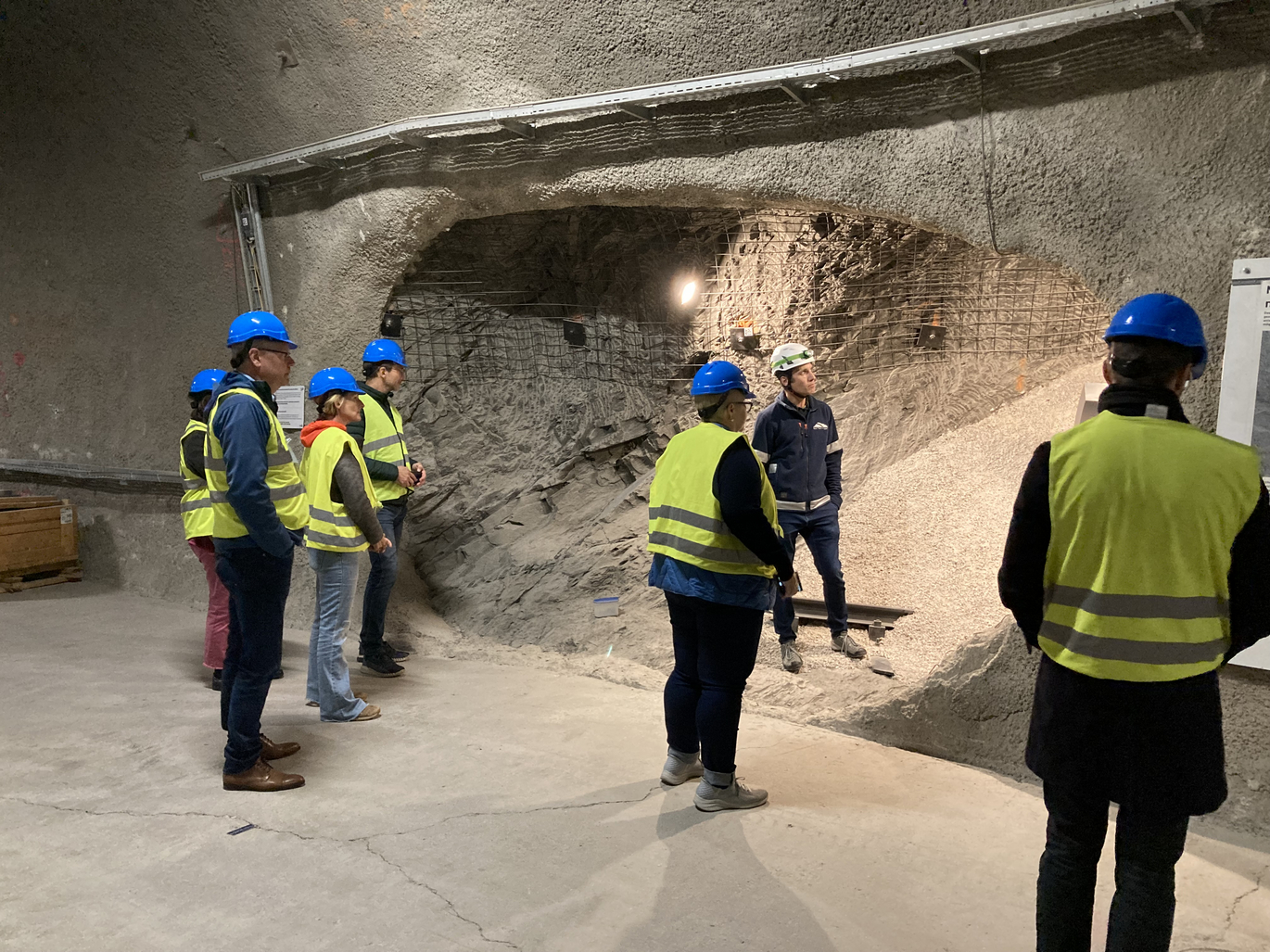
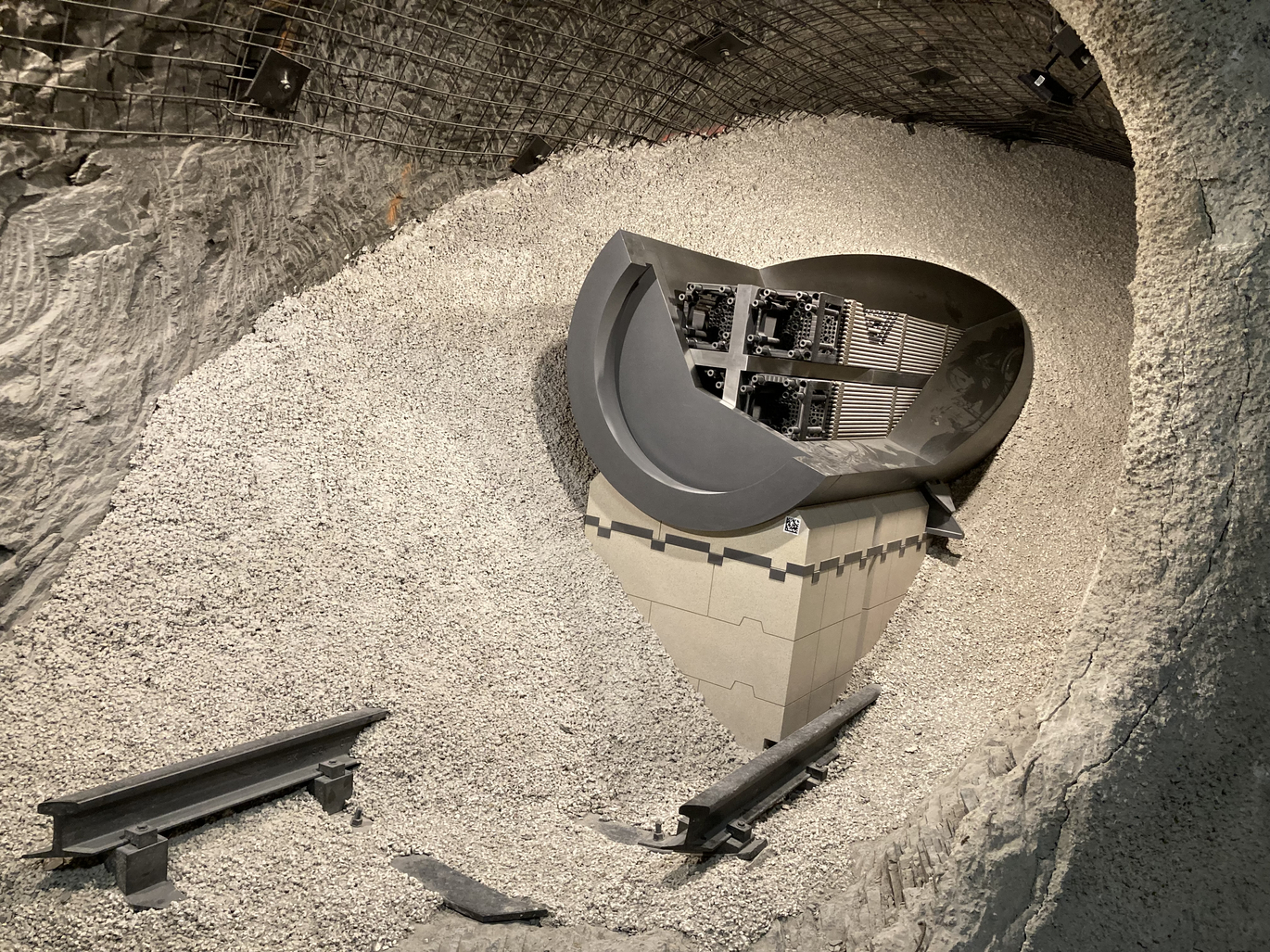
Austrian Board for Radioactive Waste Management in Belgium
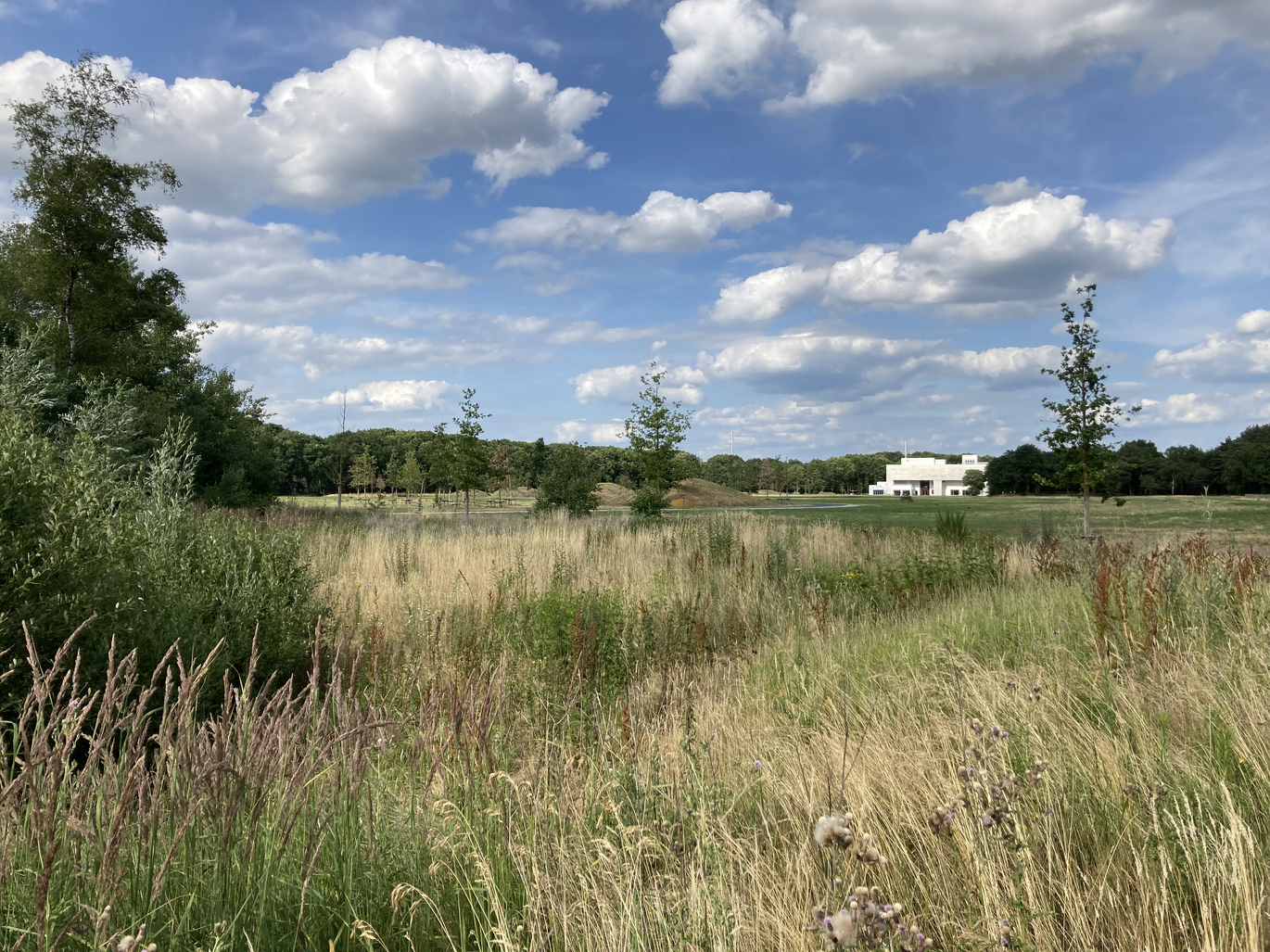
In the summer of 2023, a delegation of the Austrian Board for Radioactive Waste Management visited Belgium to get an insight into the planned Belgian repository for low-and intermediate-level radioactive waste and to learn about the unique participation model used in the site selection process. In addition, the underground research laboratory HADES was visited, where experiments are carried out that are necessary for the construction of the deep geological repository (e.g. on the deep migration of radionuclides in clay rock).
ONDRAF/NIRAS
ONDRAF/NIRAS (French: Organisme national des déchets radioactifs et des matières fissiles enrichies, Dutch: Nationale instelling voor radioactief afval en verrijkte Splijtstoffen) is the Belgian national institution for radioactive waste and enriched fissile materials. It has been responsible for radioactive waste management in Belgium since 1980.
Already in the 1970s, the first nuclear power plants (NPP) were commissioned in Belgium, and the planned operating period at that time was 40 years. In 2023, a total of 5 reactor units will be in operation at the two sites in Mol and Tihange.
Planned Repository in Dessel
The license for the future near-surface repository for short-lived low- and intermediate-level radioactive waste at the Dessel site was granted in May 2023. ONDRAF/NIRAS is responsible for the project management incl. participation. The site itself was previously used as a medical facility (incl. cyclotron, hot cells, etc.) and has been fully decommissioned (shut down). Construction is scheduled to start in 2024, with emplacement (max. 70,000 m³) to begin in 2027.
50 years after commissioning, closure of the repository is planned. A biological protective layer is then to be placed over the repository and subsequently revegetated. A time frame of 350 years is specified for post-operational monitoring.
Site Selection and Participation
The search for a site for a repository was above all a social challenge. After several unsuccessful attempts, voluntary communities were sought. The three municipalities of Mol, Dessel and Fleures Farciennes, which already had nuclear facilities in the vicinity, agreed to form so-called partnerships (MONA, STOLA, Paloff) with veto rights.
The main factor contributing to the success of the partnership was the open and honest communication with the population, for example via community newspapers or social media. In addition, the communities had an active say in the design of the repository, so requirements they had requested were also implemented.
The partnerships met monthly to work out concrete plans for the repository and benefits, with the focus always on safety. The contract was finally awarded to Dessel, where the repository is to be built. But even after that, the partnership with the neighboring community of Mol was continued.
Participation is to be continued even after the final repository has been approved, in order to work out new projects together with the population. The process of searching for a final repository for highly radioactive waste is also to be accompanied by the partnerships in a participatory manner.
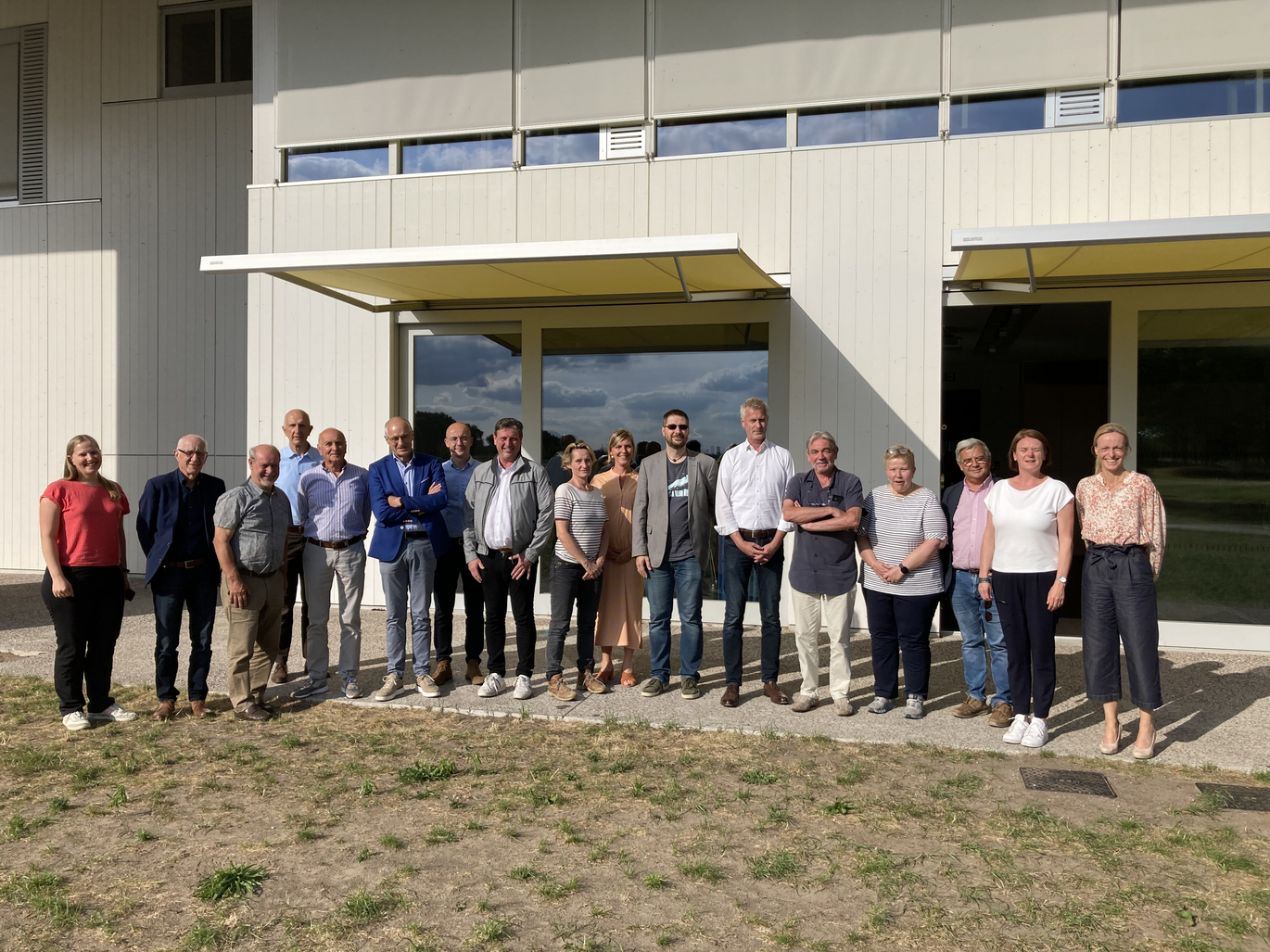
Tabloo Visitor Center
The construction of the Tabloo visitor center was one of the social conditions set by the partnerships for the construction of the repository. Tabloo is located just outside Dessel and has the shape of a giant table. The basic idea of this architecture is to illustrate that the project was created where the different parties sat down together at a table and solved the problem together. Even if all the wooden parts of the building decay in 300 years, the concrete table will be a reminder of the radioactive waste on site. All of the plans and implementation options for Tabloo were designed in a participatory manner by the local community.
The visitor center serves as a communication hub for the neighborhood and consists of several parts: Seminar rooms for the communities, event rooms, theater, bistro, exhibition on radioactivity and radioactive waste, nature trail, viewing terrace, laboratory rooms for schools. The basic idea is that Tabloo is self-financing.
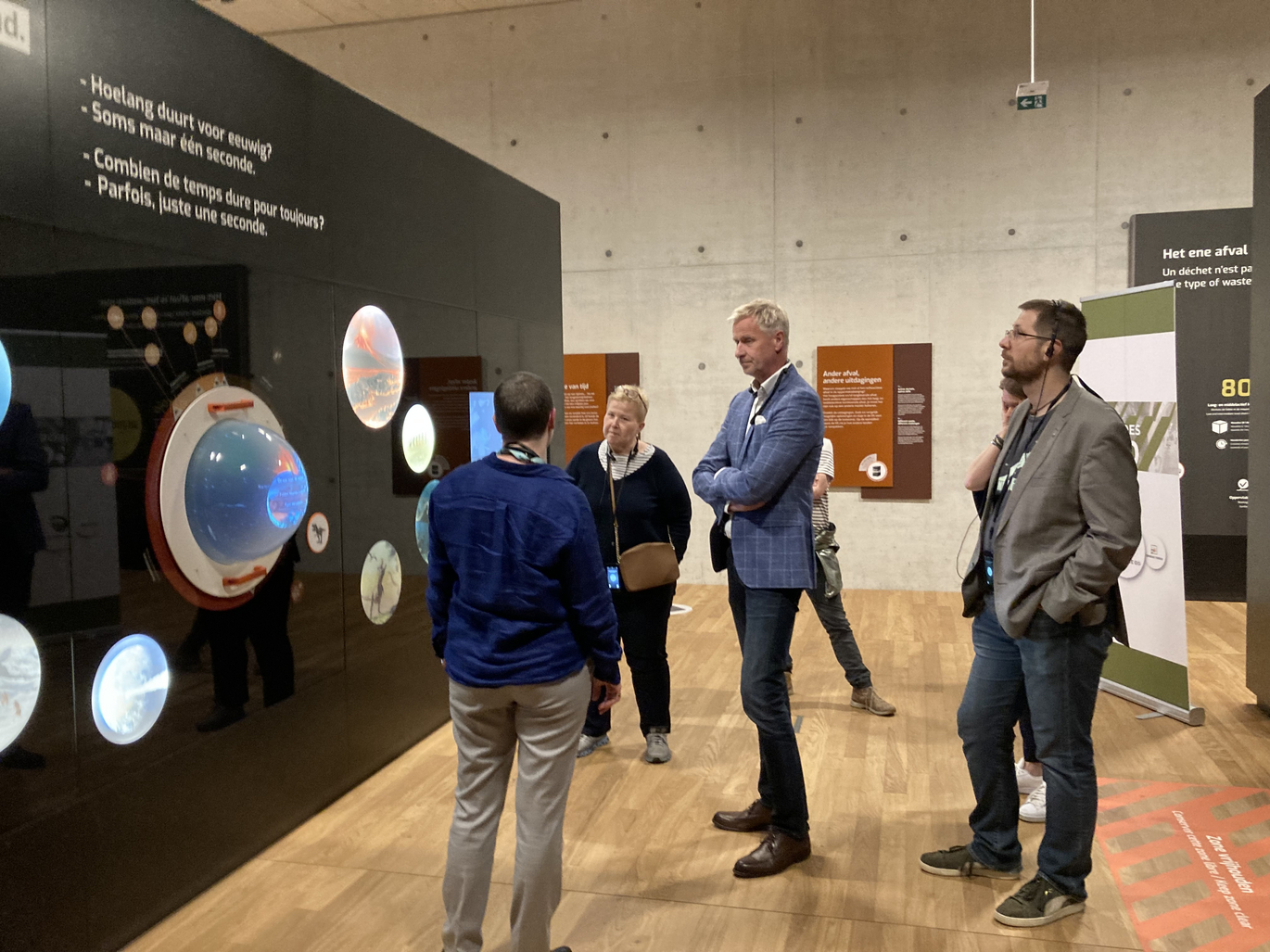
EURIDICE & HADES
EURIDICE (European Underground Research Infrastructure for Disposal of Nuclear Waste in Clay Environment) is an economic partnership between ONDRAF/NIRAS and SCK CEN (Belgian Nuclear Energy Study Centre).
EURIDICE operates the underground laboratory HADES (High Activity Disposal Experimental Site). There, experts develop and test industrial technologies for the construction, operation and closure of a deep clay storage facility. Scientists conduct experiments under "real-world" conditions, in the deep clay layer, on a large scale and over a long period of time to evaluate the safety and feasibility of geological disposal in low-hardened clay. The first European underground laboratory was constructed by hand in the 1980s and is located at a depth of 225 m. In the early 2000s, the laboratory was expanded, using industrial techniques. Also to investigate if and how a repository can be built using these methods.
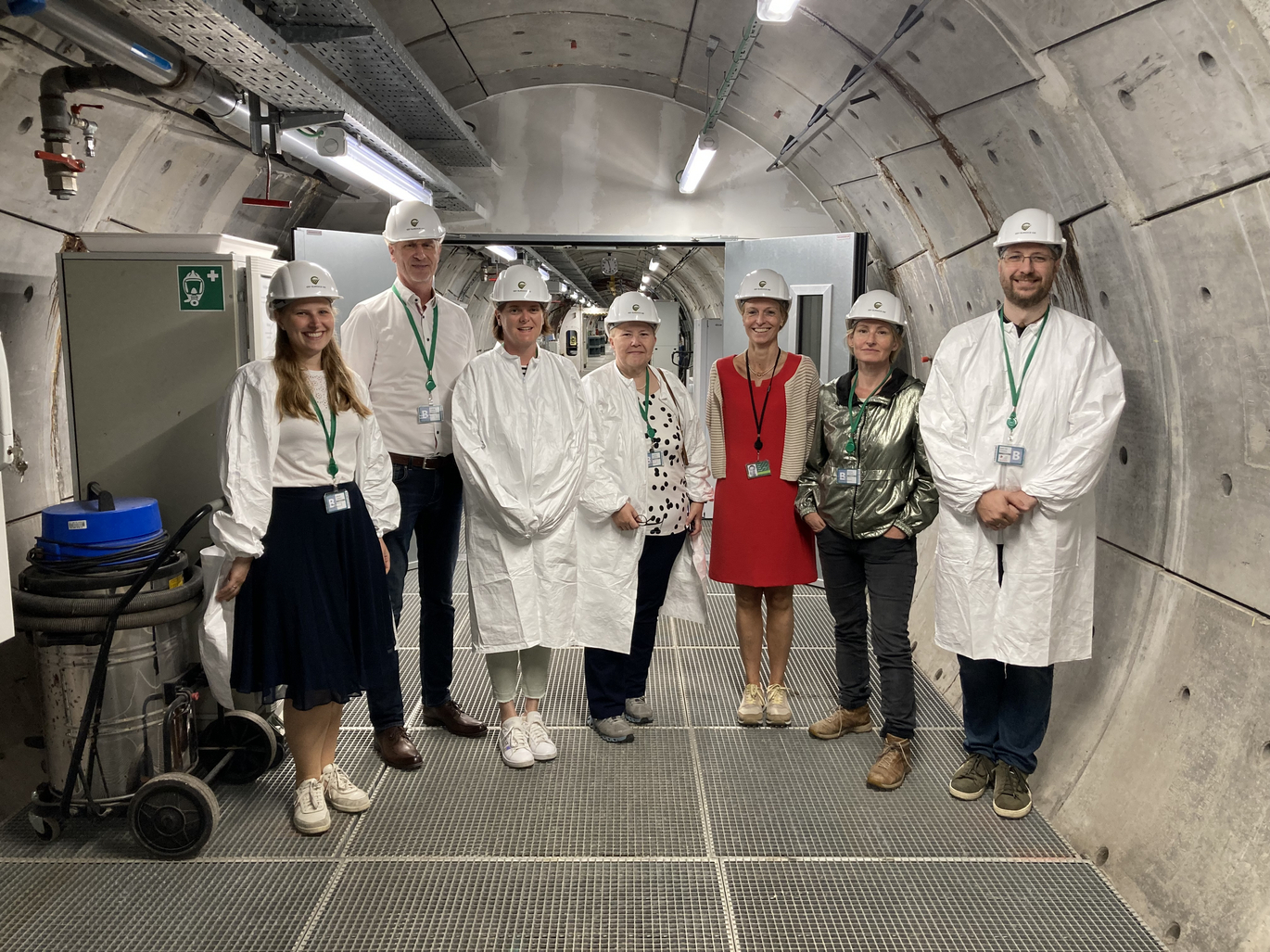
The Austrian Board for Radioactive Waste Management for Research in France
At the beginning of September 2022, a delegation of the Austrian Board for Radioactive Waste Management traveled to Troyes in France to exchange information with the French authorities and to gain insights into the French repository for low and intermediate level waste (LLW: low level waste) and the repository for very low level waste VLLW). Discussions with representatives of the local community were also on the agenda.
ANDRA (Agence Nationale pour la Gestion des Déchets Radioactifs), the French operator of the conditioning (this is what processing and packaging of radioactive waste for longer interim storage is called) and storage facilities for radioactive waste, gave an initial overview of the various repositories and the legal basis as well as the participation of the local population. Afterwards, there were guided tours of the two repositories CIRES and CSA.
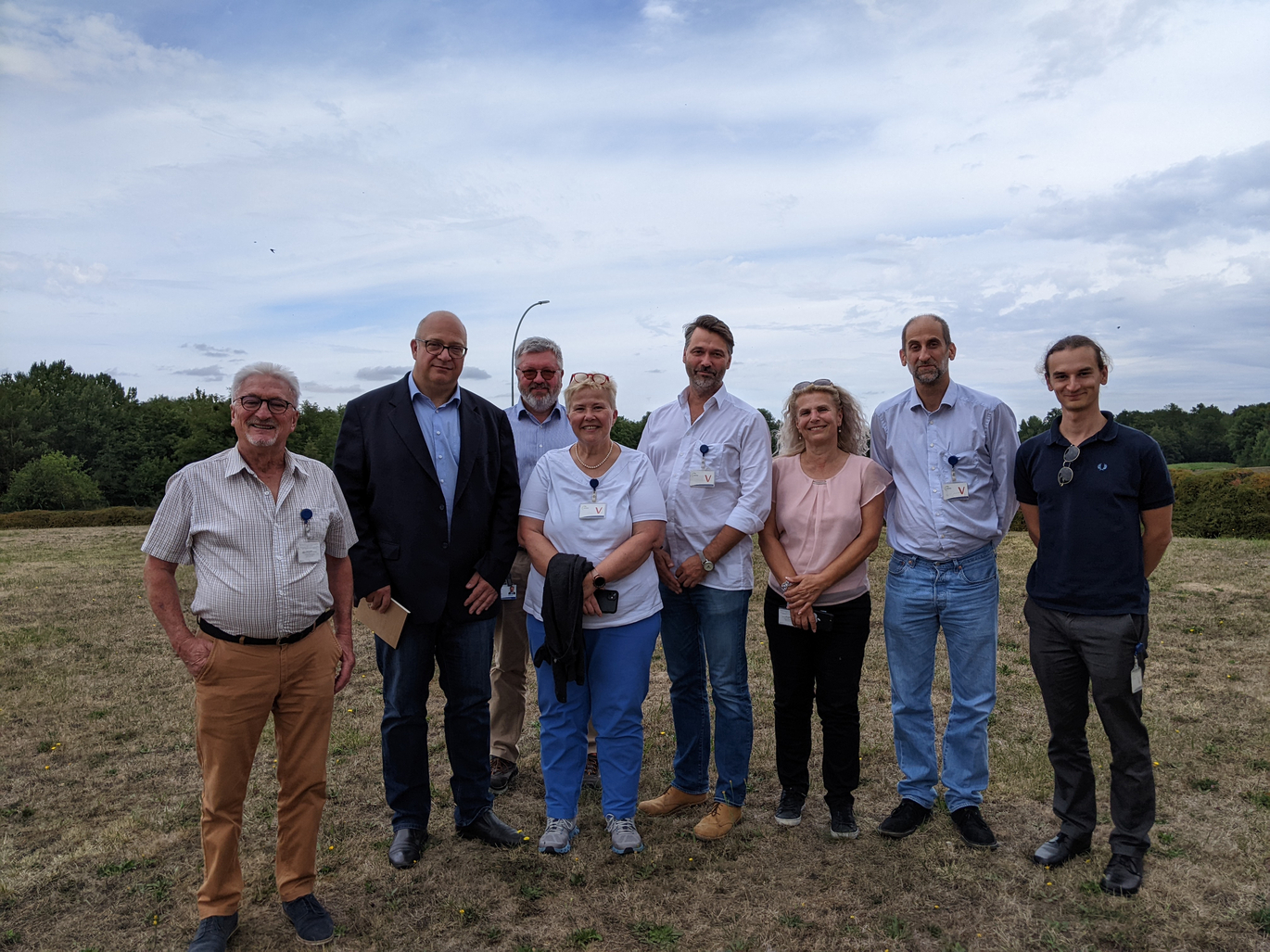
Photo: Henriette Herzog/AGES
CIRES - Repository for Very Low Level Radioactive Waste
The facility has been in operation since 2003 and is licensed for 650,000 m³ of radioactive waste (VLLW). Here, the waste is stored in 8.5 m deep and 100 m long trenches. These are filled with waste until they are 6 m above ground. The trenches are built in a clay layer (passive barrier) and sealed with a watertight geomembrane (active barrier). Once filled, they are also sealed at the surface with a geomembrane and the repository is renaturalized.
CAS - Repository for Low- and Intermediate-Level Waste with Short Half-Lives (LILW-SL)
LILW-SL waste from research, medicine, universities and from decommissioning projects is treated and disposed here. The repository has a capacity of 1,000,000 m³ and is currently 35.3% full. The waste is conditioned in drums (first barrier), which are then placed in concrete cuboids of approximately 25 m x 25 m x 25 m. The spaces in between are filled with concrete (second barrier). Once the cuboids are filled, they are backfilled with soil (third barrier).
CLI (Commissions Locales d'Information) - Local Information Commission
The CLI is tasked with informing the public about safety as well as monitoring the impact of the facility's activities on people and the environment. In France, a CLI is installed in every district. It is the public's point of contact on environmental issues and may independently commission studies and expert opinions. The independent organization receives all information on radioactive waste from ANDRA. The CLI prepares this information for the general public, so that it can be easily understood. In discussions, the delegation of the Advisory Board learned that there is hardly any rejection among the population in the regions of the repositories.
The Advisory Board was able to gain many new insights and take away input for its work, such as the importance of comprehensible communication with the public and well thought-out public participation. The concept of local CLIs was also interesting. These are not a traditional NGO, nor are they a government body, but they are required to provide accompaniment and public participation.
Compared to the amount of French waste, the amount of Austrian waste is very small. The entire Austrian waste would fit into a trench or into one of the concrete cuboids.
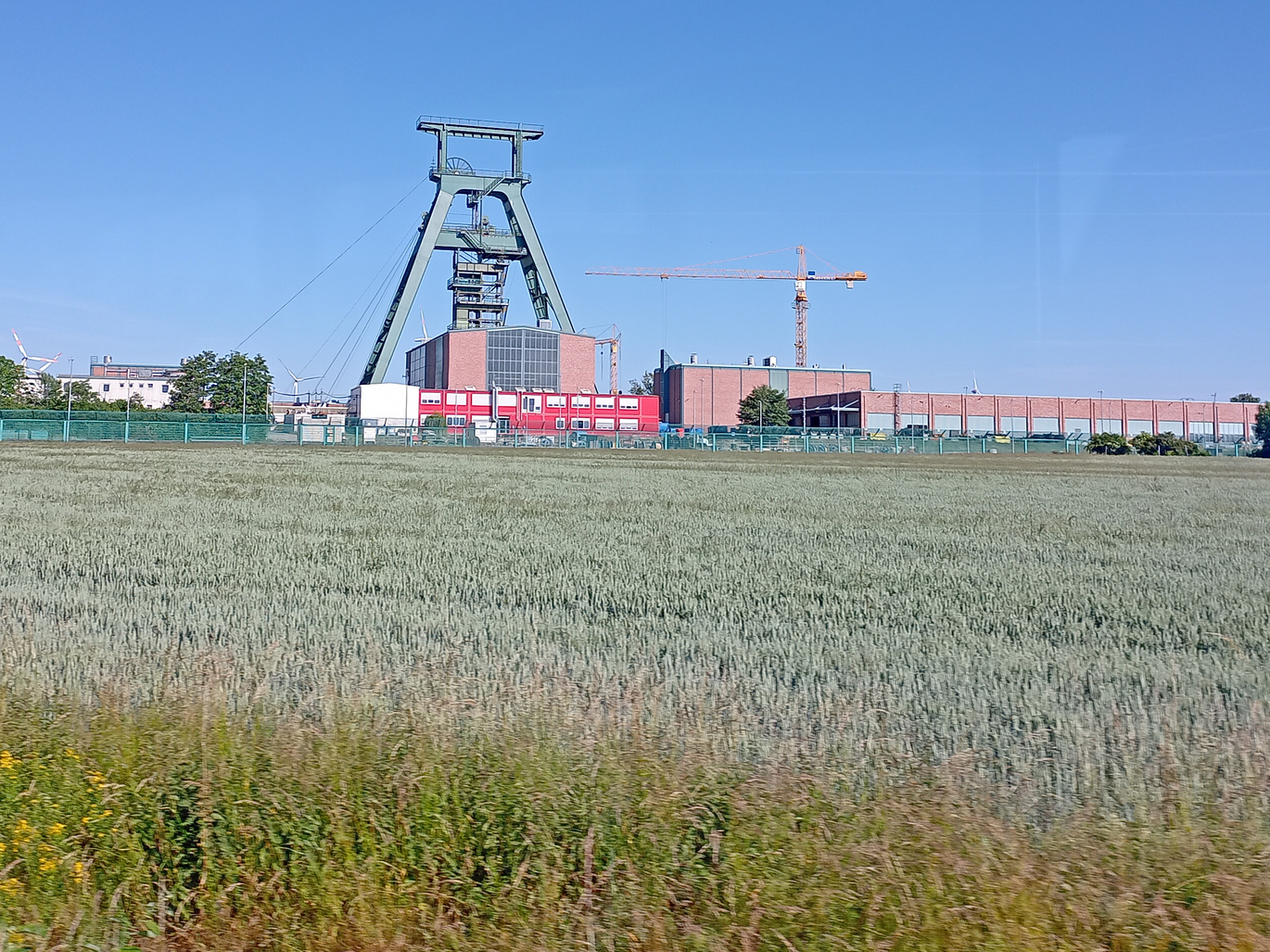
Germany's first repository for low- and intermediate-level radioactive waste licensed under German nuclear law is being built in Salzgitter. The Konrad mine is a former iron ore mine that is being converted into a repository under the management of the federal company for radioactive waste disposal (BGE). Starting in 2027, about 303,000 cubic meters of low- and medium-level radioactive waste from nuclear power plants and nuclear industry operations will be stored here. By comparison, Austria will have about 3,660 cubic meters of low- and intermediate-level radioactive waste for disposal by 2045.
Facts and Figures about the Konrad Mine
How many people does it take to build a repository for radioactive waste and how much does the project cost? The Konrad mine employs 600 men and women as well as up to 300 temporary workers. By 2027, the construction of the Konrad mine will cost 4. 2 billion euros. After that, annual costs of 80 million euros are expected.
Ready for Disposal in the Depths of the Konrad Mine
For the delegation of the Advisory Board, the tour began with a trip into the earth's interior. Wearing protective suits, the members explored the mine, which is up to 1200 m deep. Temperatures in the mine climb up to 30 degrees. The mine measures about 30 km in length and extends over several levels (the levels of a mine can be described as individual floors). Currently, levels 1, 2 and 3 of the mine are being converted into a final repository. For this purpose, the workers are constructing the transport routes and emplacement fields for the finished conditioned waste packages. The filling tunnels through which the waste is brought into the mine are being excavated specifically for this purpose.
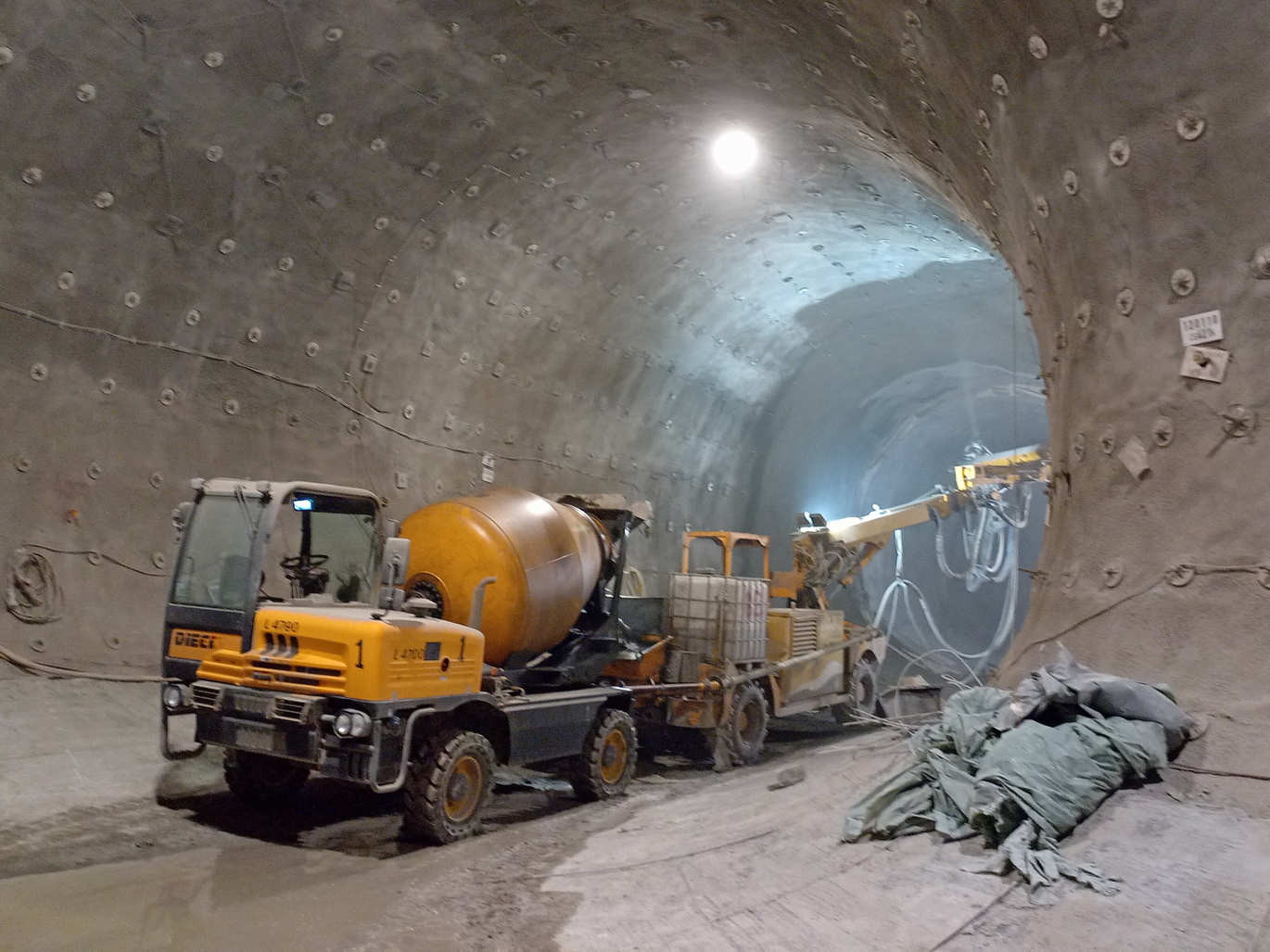
Following the tour of the mine, there was an exchange between the delegation of the Advisory Board, the managing director of BGE, Stefan Studt, the project manager of Konrad, Peter Duwe, and Johannes Schneider of Infostelle KONRAD. Among other things, they discussed the challenges of building a final repository as well as the history of the approval for its construction. In 2002, the project was approved by a planning permission decision. In 2007, the Federal Administrative Court confirmed the approval and construction could begin. The Konrad mine is scheduled to go into operation in 2027. After the end of operation, the cavities of the mine will be sealed. The retrievability of the radioactive waste is not planned.
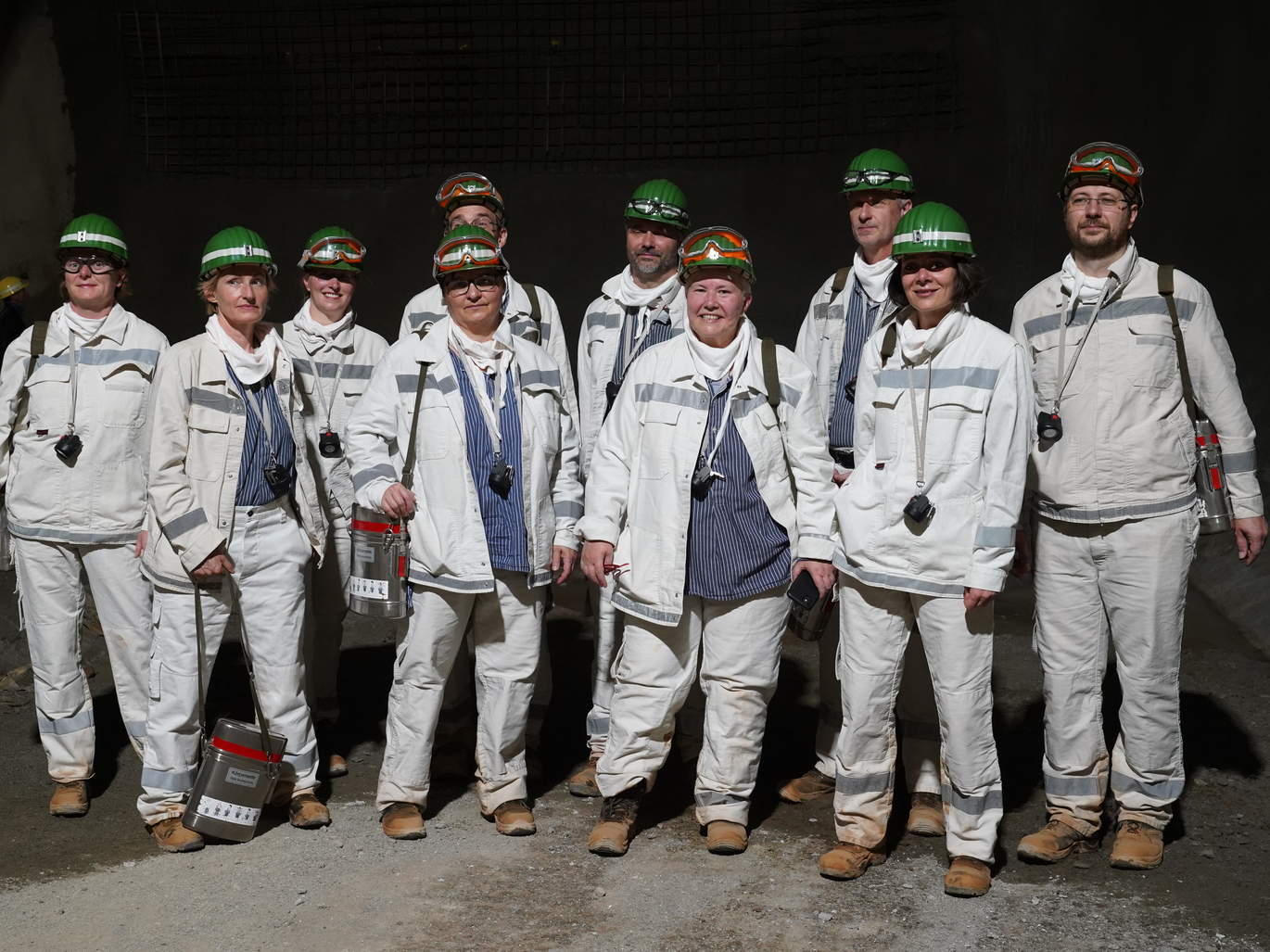
The Austrian delegation also visited the "Konrad Information Center" in Salzgitter. There, the participants of the study trip received information about the repository as well as about the public relations work of the BGE.
The first day of the study trip was concluded by a meeting with the Arbeitsgemeinschaft Schacht Konrad. This is a regional initiative that critically examines the repositories for radioactive waste in the region - in addition to the Konrad mine, also Morsleben final repository and the Asse mine.
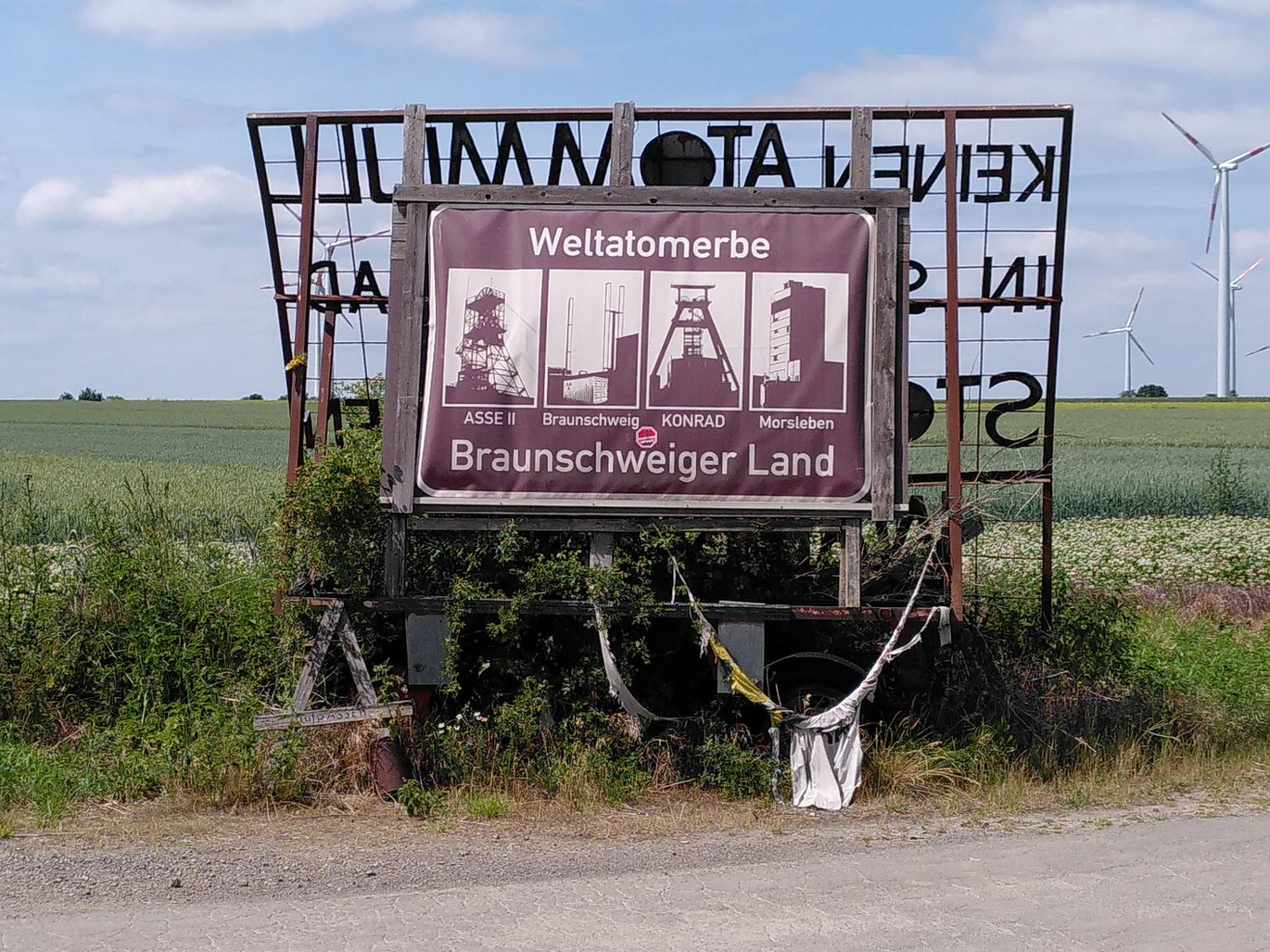
How does communication with the public and their participation in the various repository processes succeed? The participants of the study trip discussed this with Dagmar Dehmer, Head of Corporate Communications at BGE.
The members of the Austrian Board for Radioactive Waste Management look back on two exciting days. The study trip brought new insights into the disposal of radioactive waste management and new impulses for the work of the Advisory Board.
Further information on the Konrad mine
